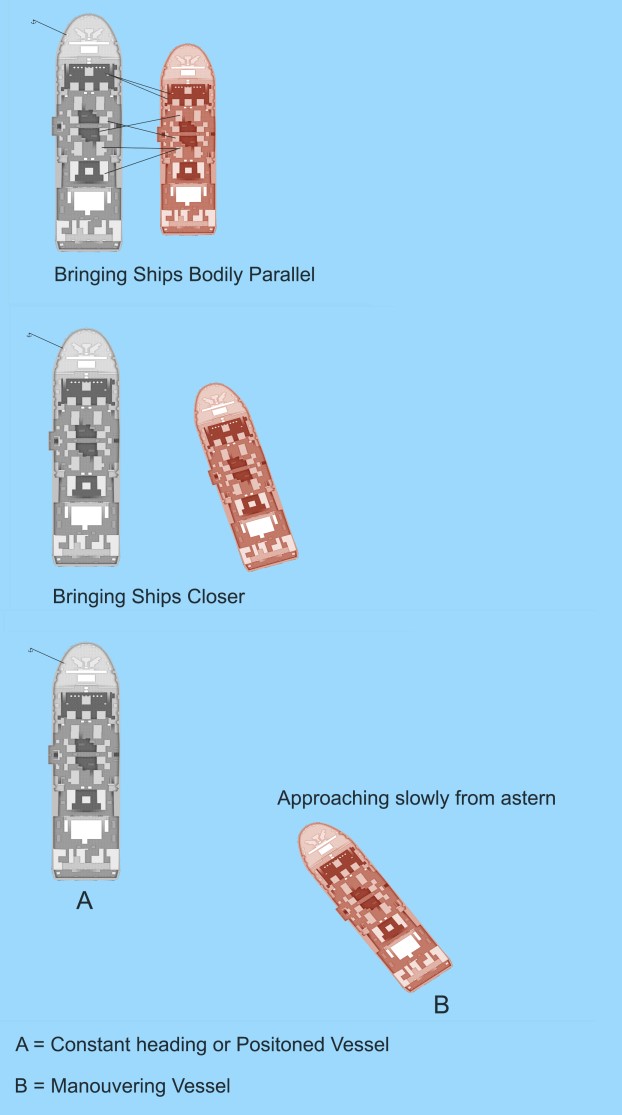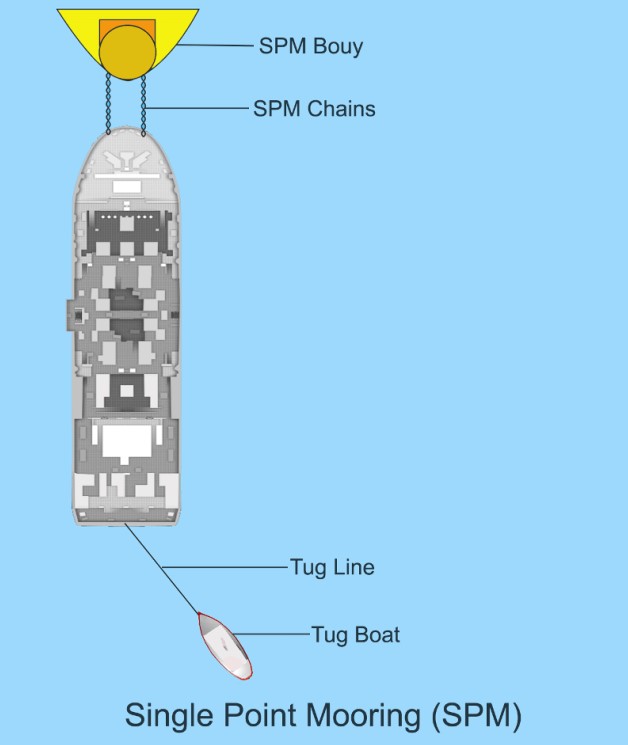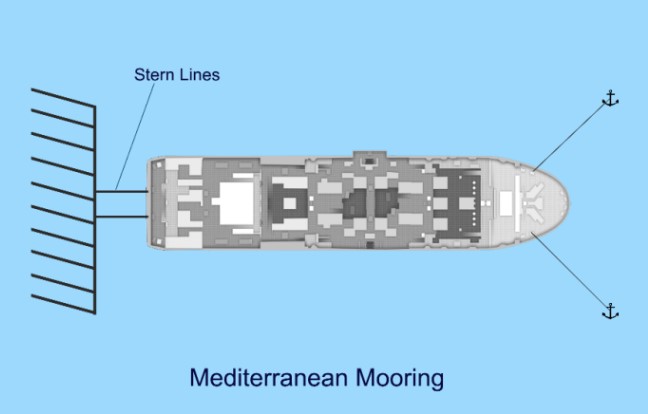Common Mooring Methods Used For Ships
Some common mooring methods used for ships are Mediterranean mooring, Baltic mooring, Running mooring, Standing mooring, Spider mooring buoys, Single-point or single buoy mooring, Conventional or multi buoy mooring, Ship to Ship Mooring.
Each ship is designed with a mooring device. Therefore, ropes and wires of recommended strength can help it be safely moored at a berth, floating platform, buoy, or dock. Fundamentally, the vessel must be placed next to the dock or berth, between the mooring buoys, between the mooring buoys, on another ship or barge, and then use your own anchor, mooring line, or shoreline to fix it.
Ships sometimes use seaward anchors and mooring lines to tow the ship away from the dock, and at the same time abandon or quickly fix the ship, and use seaward anchors to help control the lateral movement speed of the steering berth. The maneuver can be carried out with or without the assistance of a tug.
Common Mooring Methods:
1.Ship-to-ship transfer operations:
It involves berthing two ships of different or the same size together for cargo transfer. During this operation, one of the ships was at anchor or under sail. The approach area is usually behind the beam of the constant heading ship. During the approach, the maneuvering ship is used to approach, it will be parallel to the heading or heading of the other ship, and the horizontal distance between the two ships will overlap to less than 100 meters. Once this state is reached, the motorboat uses the engine and rudder to move and further increases the distance until the fenders touch each other. In this way, the two ships contacted in parallel and passed the cables separately according to the mooring plan. As a convention during the approach, the wind and sea are best forward from the bow or at a small angle.
2.Single buoy or single point mooring:
Generally, large ships that cannot approach ports and wharves are moored outside the port range or in sheltered anchorages, and cargo transfer can be carried out with single-point or single-buoy mooring equipment. The basic principle of the buoy is to keep the position of the ship stable relative to the buoy while allowing the ship to sway in the wind and the sea. A tug is usually set at the stern to keep the angle and distance of the fixed buoy. By placing the buoy in the center of the four anchors connected to it, usually, when approaching a single point or single buoy mooring device, the weather is the main criterion for determining whether to moor a ship. Calm waters with winds below 15kts are considered to be a favorable approach. The existence of strong tidal current limits the interval between berthing and berthing. The approach speed is usually slower than the speed at the same time approaching the buoy at a smaller angle, and then gradually drags the buoy messenger rope, and use a short engine kick to slowly pull the ship toward the buoy to control and maintain the buoy. When she is about 150-200 meters away from the buoy, it will move forward with the mooring winch to drag the blood vessel. In order to loosen the chain, it was released from the bow stopper, the engine kicked back for a short time, and the stern moved the bow to the starboard propeller on the starboard side.
3.Conventional buoy or multi-buoy mooring equipment:
In this method, the anchor of the bow is fixed with her two anchors, and the stern is fixed with buoys. During the approach, first, the vessel reaches the final parking position at a 90-degree angle from its final parking direction. Then, when the ship moves in, first release the starboard anchor at the predetermined position. The required number of cables was paid, and the tail thruster was also operated at the same time to stop the ship. Once the ship stopped in order to align the ship with this centerline port, the cable was released and the starboard cable was released with the stern propulsion device. During this operation, the anchor cable is tightened to move the ship forward and bear weight on the pipeline downwind, while dropping other pipelines to prevent the stern from swinging into other buoys. This maneuver requires skill and effective operation of the crew and mooring equipment because the weight of the line can be heavy.
4.Mediterranean-style mooring equipment:
For this type of mooring equipment, engine motion will be used to determine and approach a pre-calculated position. Initially tilt the bow to the berth, and then release the starboard anchor at that location. After that, the engine will run in the rear and the port anchor will be released at the designated location. The ship leaned back and moved to the starboard side. Therefore, the vessel is secured by two anchors when approaching the dock. Then pass the last line. Use anchor cables to secure the mooring. There should be about four shackles on each anchor point to complete the relationship mooring. The tide is usually used to control the drift of the ship to the dock while positioning the ship by sinking or releasing on one of the anchors.




